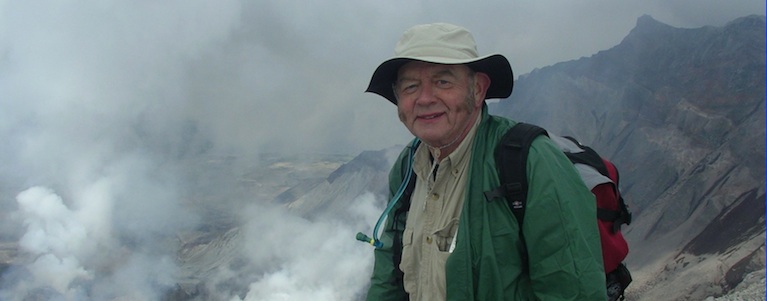By Dave Bunting, Shopper Editor
- Community Solar Panels
- American Adults Pessimistic
- Asteroid Bennu
- Youth Cellphones & Social Media
- Hydrogen Fuel
- Norway Electric Cars
- Reuse Heat from Air Conditioners
Snohomish PUD offers subscriptions
to large community solar panel
arrays to homeowners
The Community Solar program will build 162 solar panels in a field in Arlington.
The program will sell subscriptions for $600 per 380-watt panel, or $120 for a fifth of a panel.
The panels will remain installed in the community field- no work will be done at the subscriber’s home.
Subscribers will receive a monthly credit of $0.06/kWh on their bill equal to their portion of the solar system’s production. In addition, subscribers will also receive an annual incentive payment provided by Washington State. We anticipate this payment will be $0.16/kWh per year of energy produced for the first 8 years of the program.
Info: shpr.fyi/2O1yrov
Pew Research finds most
adult Americans pessimistic
- 72% expect income gaps to widen, and 44% see living standards declining.
- 57% see tougher financial times on the horizon for older Americans. 84% say by 2050 most Americans will have to work into their 70’s.
- 59% of adults are pessimistic about the environment, and 69% are worried about climate change.
- 82% say robots and computers will definitely or probably do much of the work currently done by humans. 69% see this as a bad thing for the U.S.
- Americans are more likely to see the nation’s shift to “majority-minority” status as a good thing than a bad thing, but 42% say it’s neither good nor bad.
- 87% expect a woman and a Hispanic person to become president by 2050.
- 60% of adults see a smaller role for the U.S. on the world stage.
- 65% of adults say the U.S. will be more politically divided in 2050 than it is today, and this belief is held across partisan lines: 68% of Republicans say this, as do 62% of Democrats.
- 48% say they are very worried about the ability of political leaders to solve the country’s biggest problems.
- Info: fyi/2TYxWBZ
Asteroid Bennu covered with
boulders instead of dust
NASA’s Origins, Spectral Interpretation, Resource Identification, Security-Regolith Explorer (OSIRIS-REx) mission will return a sample of a near-Earth asteroid named Bennu to Earth in 2023. OSIRIS made the first-ever close-up observations of particle plumes erupting from an asteroid’s surface.
Bennu also revealed itself to be more rugged than expected. Such space objects are expected to be primarily covered with dust, thus having wide flat spaces on which a spacecraft could land easily. But Benno is covered with boulders, even relatively large house-size boulders, challenging the mission team to alter its flight and sample collection plans, due to the rough terrain.
Info: shpr.fyi/2CG73In
Increases in youth suicidal
thoughts blamed on
cellphones, social media
But not only on them directly, but also on their seriously reducing youth sleep time.
Info: shpr.fyi/2TAse4f
Hydrogen from seawater
Stanford researchers have devised a way to generate hydrogen fuel using solar power, electrodes and saltwater from San Francisco Bay.
The findings, published March 18 in Proceedings of the National Academy of Sciences, demonstrate a new method of electrolysis, separating hydrogen and oxygen gas from seawater via electricity. Both this and existing methods require much electric power, but existing water-splitting methods rely on highly purified water, which is a precious resource and prohibitively costly to produce.
Info: shpr.fyi/2CG73In
Cheaper way to
hydrogen fuel
Research has demonstrated that using nanocatalysts composed of nickel and iron increases the efficiency of water electrolysis, the process of breaking water molecules apart to produce hydrogen and oxygen and combining them with electrons to create hydrogen gas.
When nanoparticles composed of an iron and nickel shell around a nickel core are applied to the process, they interact with the hydrogen and oxygen atoms to weaken the bonds, increasing the efficiency of the reaction by allowing the generation of oxygen more easily. Nickel and iron are also less expensive than other catalysts, which are made from scarce materials.
Info: shpr.fyi/2Ost1mJ
In Norway half of
cars sold are electric.
One of the key policies is Norwegian car-taxation system is based on the principle that the more you pollute, the more you pay. Tax for a new car is calculated by combining weight, CO2 and NOx emissions. It is progressive, making big cars with high emissions very expensive. This results in most electric vehicles becoming cheaper compared to similar petrol models.
In addition, other incentives are in place such as 25% sales tax exemption for new EV purchases, road toll exemption, low annual road tax, free access to municipal parking and ferries, access to bus lanes and a good network of public charging stations.
Info: shpr.fyi/2uwEmt4
Can we re-use heat
withdrawn from air
in an air conditioner?
Air conditioners extract heat (energy) from air. They also use a lot of electric power (energy) to do so.
The sum of the heat (energy) extracted from inside air plus the work (energy) that went into the cooling process is discharged in the form of waste heat (energy) into surrounding air.
Is there a way we could convert that waste heat (energy) into a useful form instead of wasting it?
There are examples of heat being converted into useable, storable energy. Plants convert energy from the sun into food (energy), all the food we eat, in fact. Heat from the sun also heats, vaporizes water into clouds which rain, and the electric power (energy) is produced in hydro dam turbines. The engines in our cars, turns fuel (energy) into heat, which then performs the work (energy) of propelling our cars.
Apparently no one has yet devised a way to use this great source of readily-available heat energy.
Info: shpr.fyi/2FznO8V




